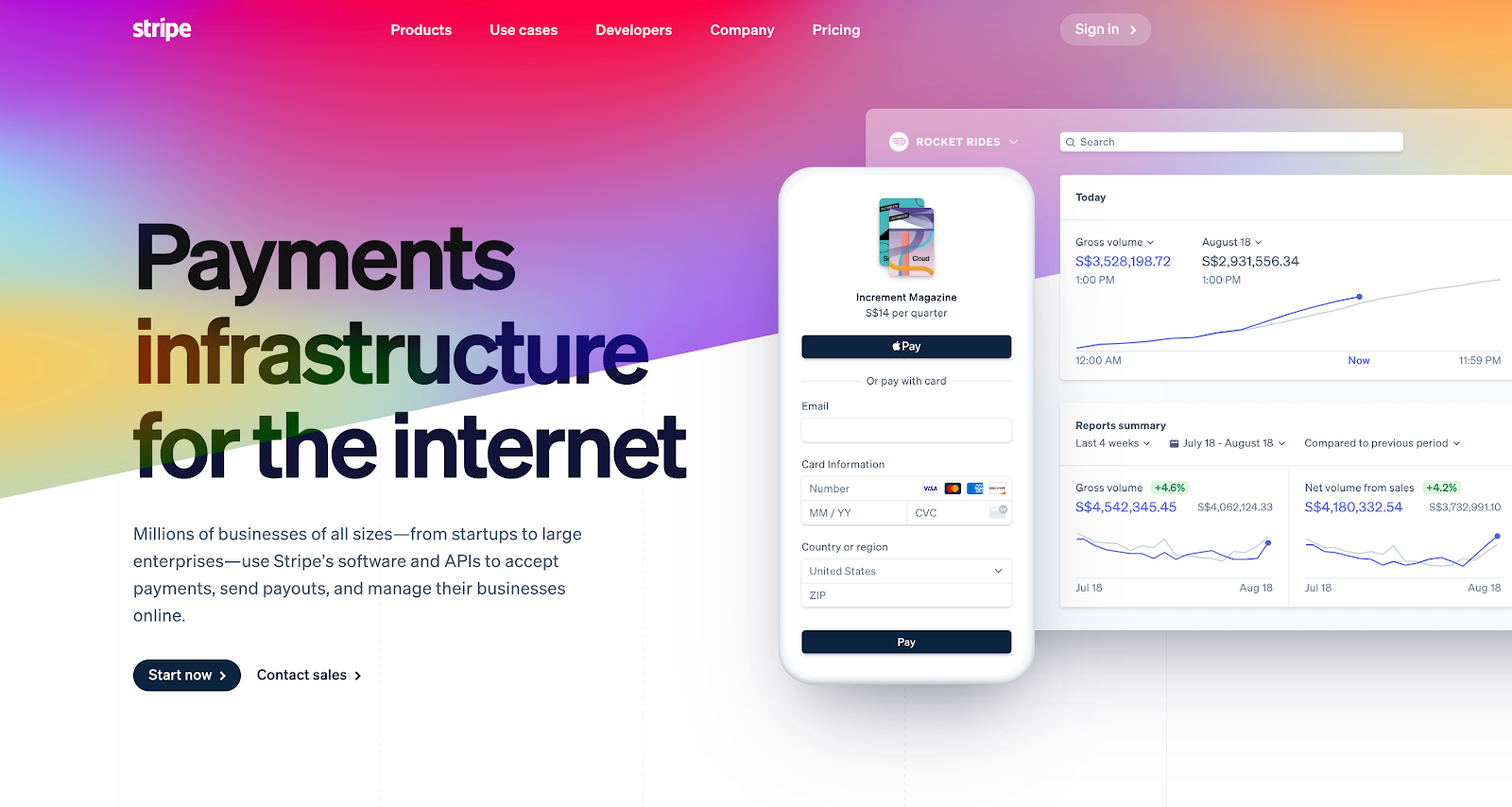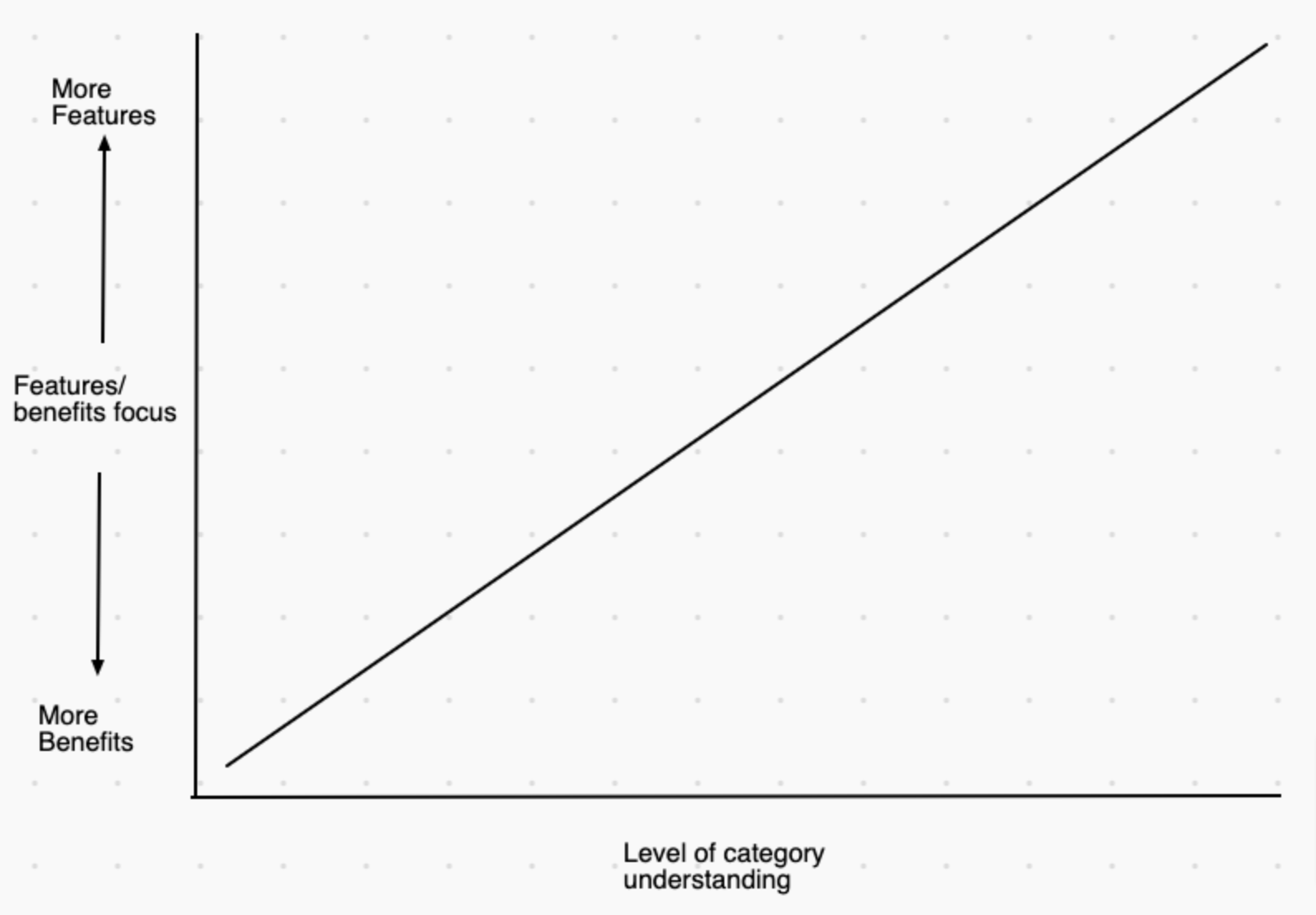SaaS marketing: when to talk about features vs benefits
“Talk more about the benefits of your SaaS and less about the features.”
I hear some variant of this often when people are talking about how they should market their SaaS.
But that’s a very incomplete view, if not plain wrong.
Let me explain.
The features/benefits brain box
If you’re hungry, and I have food, I don’t need to sell you on the benefits of food.
There is no need for “quash your hunger in a healthy and nutritious way” in my messaging to you.
You just want the food, and you know exactly why the food is valuable to you.
If you’re hungry and I show you food - say, a burger - your brain opens it’s “food box” and dumps information on you:
-
That will quash my hunger
-
That will taste good
-
That will be harsh on the ol’ arteries, but totally worth it
You know about food and what it does so well that there is simply no need for anyone to tell you the benefits of it.
In the SaaS world, similar concepts apply.
For example, your brain probably has a “payment processing” box. You hear “payment processor”, and your brain dumps information on you from the payment processing box:
-
This will allow me to receive money
-
This will reduce my manual invoicing time
-
Etc.
You understand this category so well that the mere mention of the product (and/or the features) automatically informs you of the value, because they are so closely linked in your brain.
The crux is this: for well-understood categories, your brain has a box for it. The better understood the category, the more information there is in the box.
And in these situations, to talk too much about the benefits is actually harmful to your marketing.
It makes you come across as a sleazy marketer.
If I try to sell you too hard on “receiving money online will make you rich!”, it’s sleazy. And while I’ve picked a silly, exaggerated example there, really anything about you getting more money in your bank will come across as sleazy given how well you understand what payment processing is.
The folks at Stripe seem to agree with me, given their very feature-driven headline:

It’s “payments infrastructure for the internet”. That’s what it is. Not what it does. Not what the benefits are. What it is.
But the cool thing is that when they say “payments infrastructure for the internet”, your brain comes up with all of the benefits for you, by you:
-
I can receive money
-
I don’t need to worry about payment laws and regulations
-
This will significantly reduce my development time
-
Etc.
So - if it’s a well understood category, your brain does the feature/benefit mapping for you.
Working with less understood categories
ON THE FLIP SIDE, if the category is less understood (perhaps it’s newer), then there is a greater need for selling the benefits, because people might not know what those benefits are.
This also applies to less understood features in well understood categories.
For example, if I think of something revolutionary like Elon Musk’s Neuralink, I’d like to know about the benefits.
I’m not immediately sure that having a chip inserted into my brain is a good idea. “It’s a chip in your brain!” is not a compelling marketing message in the same way as “payments infrastructure” is.
But if you tell me that Neuralink will allow quadriplegics to walk again, or give me a direct interface in my mind for the sum total of all human information, I’ll begin to warm up to it. At that point, maybe you can tell me more about this chip in the brain aspect of it and I won’t be as turned off by it.
It’s also important to note that if you have a less understood feature for a well understood SaaS, then by all means talk about the benefits of that feature.
For example if Stripe has an AI anomaly detection system which can help with fraud prevention, they should open with benefits, because that’s a less understood category. And it turns out that is precisely what they do:

Here, we’re going with the benefit of “fighting fraud”. Down the page, you’ll notice they then get into the features and the AI etc. - once you have a reason to want to know about them.
The category understanding matrix
So we have two extremes - well understood categories and less understood categories.
Everything in between is a spectrum. I call it the “SaaS Category Understanding Matrix”. That’s right, the “SCUM”.
It can be summed up in this neat little chart:

Not winning any maths competitions here. As the level of category understanding increases, so too should the amount you focus on features over benefits. And vice versa.
Levels of abstraction for the benefits of SaaS
We have another problem. Let’s suppose our SaaS is on the less understood end of the spectrum.
So it’s important to talk about benefits.
Well, which benefits should I talk about, and at what level of abstraction?
Example - for my sales team’s CRM, is “increase profit” the benefit? Or is it “organise your contacts”?
They’re both benefits, and they can both come about from exactly the same set of features, and one leads to the other - in order to increase profit in a large organisation, you need to have contacts well organised.
But I think we can all agree that neither of those feel quite right.
“Increase profit” is a little lofty - it’s too abstract from the details of a CRM. It’s too high level.
But “organise contacts” is a little micro - it’s virtually a feature.
The correct place to be is somewhere in between - this is a feeling that a lot of SaaS marketers and copywriters have. They try to intuit where the correct level of abstraction is.
But I’d argue that no one explicitly thinks about the levels of abstraction - how high or low level the benefits they communicate should be.
They’re just thinking about benefits, and they ‘feel out’ which level seems right, and implicitly assume there is only one level.
So I plan to make this concept more explicit in this post.
The channel matters
You may be aware of this concept when it comes to your SaaS:

People can fall anywhere on this spectrum when it comes to your SaaS platform. My sense is that most people think their prospective customers are between level 3 and 4.
The assumption is that they probably know about your SaaS, but if they don’t, they at least know that something like your SaaS exists.
I think this is a dangerous assumption to make.
It’s especially dangerous if you think it applies on every channel.
For example - if someone finds your website by direct url or organic search, it may be that they are solution/product aware. They’re looking for a solution to a problem they have, and they find your website in the process. Fine.
But if they tend to visit via a Facebook ad directed to a cold audience, that’s a different story altogether.
It’s complicated further by the fact that Facebook ads to a custom audience (such as past website visitors) are going to be in a different category altogether.
So it’s not just the channel, but the type of traffic you are getting from that channel as well.
But the point is this: if someone is “unaware” - they have no idea they have a problem - they’ll need very different messaging/content vs someone who is “product aware”, and is actively looking for solutions where your SaaS is one of the contenders.
Unaware: educational/inspirational content, leaning towards benefits if you do talk about your product.
Most aware: ‘buy now’ messaging, case studies etc., leaning towards features and differentiators when talking about your product.
So what does this mean specifically, for each channel?
I need to be clear that “it depends” is the most accurate answer here. But I always hate that answer myself, so I’m going to throw out some rules of thumb to at least get you in the ballpark - take it with a large grain of salt.
I’m picking averages and the least imperfect option, to at least try to reduce some uncertainty:
-
Website homepage - assume product/solution aware.
-
Ads to custom audiences of past buyers, retargets, and/or their lookalikes - assume product aware.
-
Ads to cold audiences - assume problem aware.
-
Website landing pages - you can customise these how you like - create a landing page for each awareness phase and send traffic from different channels as is appropriate for each page’s messaging. For example, your ads to cold traffic go to a landing page that is tailored for that cold audience. Ads to warm traffic go to a landing page for a warm audience. Etc.
-
Website content/blog - do it all. Ideally, create content for all phases - top, middle, bottom of funnel content. But I understand this is resource intensive, so if you must choose (and you often must), in general you should choose the bottom to lower-middle funnel content and work up from there. It’s lower hanging fruit.
Conclusion
So that’s it. Those are my thoughts on features vs benefits. To summarise:
-
People will assign benefits to features when they hear them, provided they understand the feature and/or category.
-
There is definitely a time and a place to talk about features over benefits. The more well understood the category, the more you should focus on features as opposed to benefits (and vice versa), because people already have the benefits well mapped to features in their minds.
-
If you’re in the ‘benefits’ domain, think about your messaging in terms of someone’s problem/product awareness (or lack thereof). The more aware, the more ‘direct’ you can be. The less aware, the more educational/inspirational you should be.
Thank you.
Simon